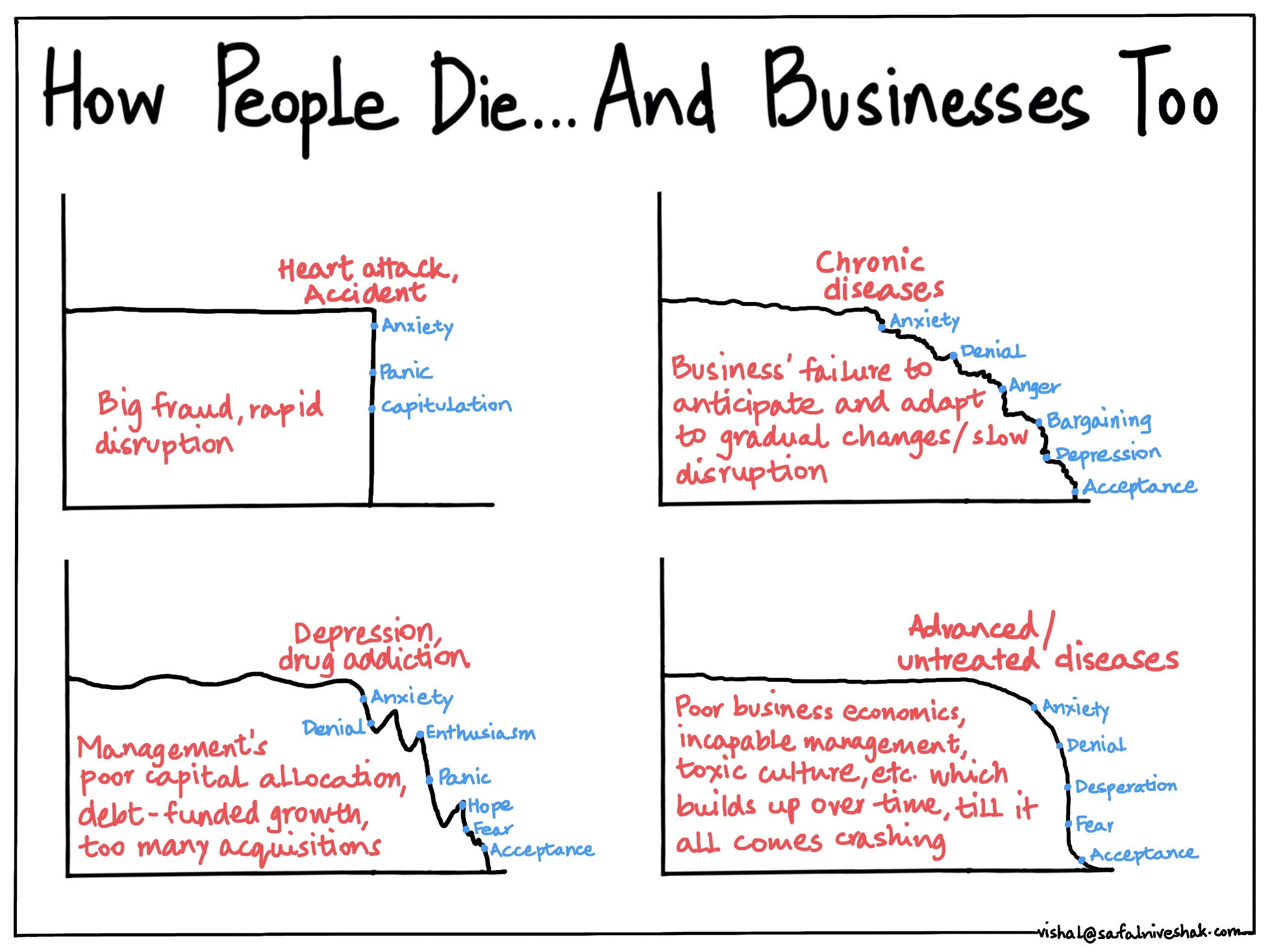How to Survive the Death of Businesses - safalniveshak
Tan KW
Publish date: Mon, 23 Sep 2019, 04:26 PM
Businesses die, like we do.
However, in contrast to us (I mean, humans…because some bots and aliens may also be reading this post) gradually increasing our average life expectancy over decades, more businesses are dying faster than any time in history.
While there is no real research done on Indian businesses, as per Credit Suisse, the average life span of S&P 500 companies in the US, which stood at 60 years in the 1950s, has now fallen to under 20 years.
The biggest culprit for this is the disruptive force of technology, which is killing off older companies earlier and at a much faster rate than decades ago.
Anyways, today’s post is not about what businesses can do to stave off their deaths, which is mostly inevitable in these rapidly changing times.
It’s about how well the death of businesses compares to how the final closure comes for us humans and how well to accept the same, so as to survive financially.
I read an article recently on how to die well, whose points I used to create this illustration…

As you can see in the three charts above, except for the first one where death for us and businesses is sudden, the cracks in the foundation start well before the days of final collapse.
And it’s rarely a single factor, but a combination of poor lifestyle – capital misallocation, leveraged balance sheet, failure to anticipate or adapt to changing times and disruption, toxic culture, over-diversification, etc. – and bad luck (poor genes) that kills us, and also businesses.
I remember hearing the terms “natural death” for people who die at old age and “untimely death” for those who die young. But isn’t all death natural and timely (who decides when the time is up?), for us and for businesses?
Now, nobody has any control over how luck will play its part, like high-quality businesses and managements losing track. But we certainly can control the impact of lifestyle issues, and to a large extent, by staying away or selling off businesses/stocks that are intrinsically bad…the moment we realize they are bad.
Hanging on to such businesses without the acceptance of the fait accompli – because you have already lost some or a lot of money on them – will only give you pain, and moments of anguish, panic, desperation, and fear.
Businesses, like life, come with a terminal value (remember DCF?). The good ones will have a long life and then fad away. The bad ones will go down in any of the ways as shown by the second, third, and fourth charts above.
If you really wish to do well as an investor, you must stay away from such businesses instead of relying on false hopes of a recovery. And then pray that the first ones – those that may die out of the blue – don’t happen to you.
Death will happen to all of us and to all of our businesses, and that must not worry you. It’s the stagnation and gradual decline that diseases (bad management, capital misallocation, etc.) bring along, that you must watch out for (and try working backward now so as to avoid them, except for bad luck).
May you have a happy, healthy life and portfolio ahead.
https://www.safalniveshak.com/how-to-survive-death-of-businesses/
More articles on Gurus
Created by Tan KW | Oct 23, 2024
Created by Tan KW | Oct 17, 2024
Created by Tan KW | Aug 27, 2024
Created by Tan KW | Jun 26, 2024
Created by Tan KW | May 05, 2024





















